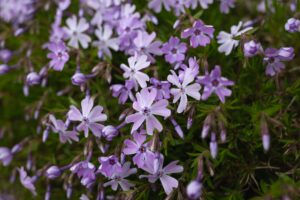As winter approaches, and many of us face soggy sections and gardens unable to be worked until spring, those with rock gardens have the advantage. These well-drained show cases of pretty alpines, less common bulbs, and dainty perennials also offer some of the first blooms of spring!
A little history
Rock gardens, as we are familiar with them today, first made their appearance in the late 1700s. This was a period when affluent English travellers were visiting and walking in the Alps of Europe where many of the plants we see in rock gardens of today, hail from. It was also a time when ‘plant hunters’ (explorers whose main aim was to search for new botanical species) were sending exciting new plants back to England.
Because many of these plants came from mountain homes, and required very good drainage, gardeners looked for ways to provide it by constructing alpine environments in miniature. What resulted were raised areas of garden, filled with gritty, well-drained soils, held in place by strategically placed rocks and stones. Little paths wound through these arrangements to allow the gardener to access their plants, and stepping stones among plantings prevented the ground being compacted as the gardener worked. Because alpine plants frequently have to survive months without rain, rock gardens also had the potential to become drought resistant.
If you would like to create your own rock garden, here are some tips to get you started:
Creating a rock garden
Choose a sunny, north facing section for your rock garden. If it has a sloping aspect, all the better. Clear it thoroughly of weeds and grass. This is essential because a rock garden houses, primarily, perennials (plants that remain in place from year to year rather than those you replant each season). Weeds can be difficult to extract without digging up an entire plant.
Collect rock and stones of different shapes and sizes, but try to source them from one area, if possible, so they have a unity of appearance. Rocks with lichen or moss growing on them can provide extra interest.
When sourcing soil, choose material not nitrogen-rich. Check with your garden centre if this is the case as they may stock only rich mixes suitable for vegetable gardens. If this happens, head to a landscaper who may be more likely to have what you are looking for.
If you cannot source a rock garden mix, make your own using equal parts of grit (builder’s mix can work well), aged leaf mold, and topsoil. A scattering of slow-release fertilizer pellets can be added but do your research thoroughly first as not all rock garden plants will appreciate this.
If you have a sloping aspect to your garden site, you will (unless your soil is already gritty and free-draining) need to dig out planting areas to a spade’s depth, and replace it with your rock garden mix. Rocks will need to be sunk into position to a depth they cannot be dislodged by weather or routine gardening.
If you don’t have a sloping aspect for your garden, first create a low retaining wall using some of your largest rocks. If rocks are at a premium, you could use untreated timber ‘sleepers’ instead. As you fill in the space created by the wall, use rocks to create terraces.
In placing rocks, avoid repeated patterns – randomly placed rocks are more likely to create the natural alpine look a rock garden should have.
Create level pathways between rocks as you build, making sure they are stable and wide enough to work from safely. Line them with weed mat, and cover them with grit.
Before sourcing plants, consider joining the NZ Alpine Garden Society or a local alpine garden club. Visit rock gardens close to home to get a feel for what will grow best in your area.

Some alpine plants are more difficult to grow or maintain than others. Start with some of the easiest until you are more experienced. Some easy-to-grow alpines include Phlox subulata, dianthus (those that grow no higher than 30cm), thrift, and alpine alyssums.
Rock gardens can become a passion, and best of all, they are perfect for a smaller retirement section. What’s not to love!








Join the Discussion
Type out your comment here:
You must be logged in to post a comment.